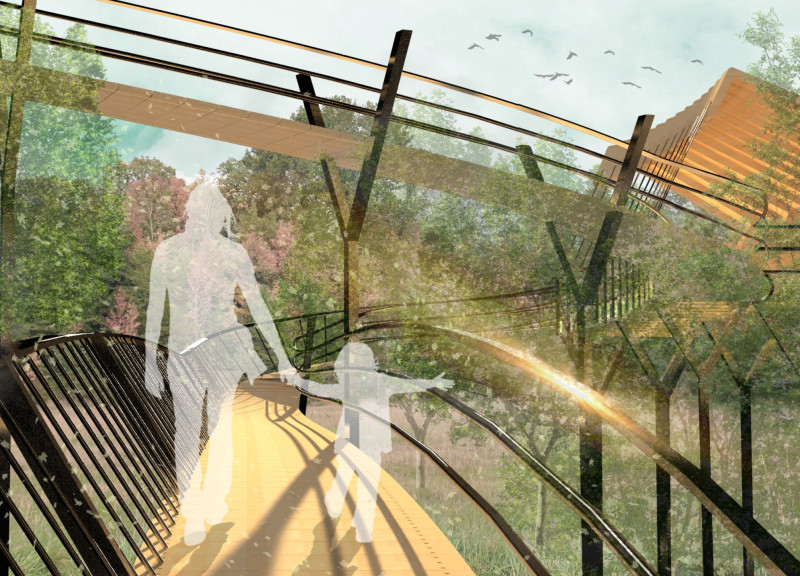5 key facts about this project
The pavilion project is designed to sit on a hillside surrounded by many trees. This location highlights the connection to nature and the sources of timber. The design is modular, allowing for easy construction and eventual disassembly. This flexibility makes it suitable for various settings and user needs. The pavilion serves as a space for interaction, encouraging visitors to engage with the trees and learn about their characteristics and the history of timber.
Design Concept
The main idea behind the pavilion is its modularity. The lightweight structure integrates well with the natural surroundings. Visitors can explore the space freely, discovering different species of trees while learning about timber. The design focuses on education, creating an experience that fosters a deeper understanding of natural materials.
Structural Features
Key structural elements are important to the pavilion's function and visual appeal. The pathways feature modular designs that allow for easy movement. Fixed and suspended components add interest to the space. As people walk through the suspended areas, they experience a slight sway, reminiscent of being on a bridge. Movable benches encourage visitors to stop and reflect on their surroundings.
Materiality
Materials used in the pavilion emphasize sustainability. Modular timber serves as the main construction material. Steel is included for added support, making the lightweight design stable. A transparent PTFE cover ensures protection from the weather while allowing daylight to enter the space. Traditional joinery techniques, like the mortise and tenon joint, reinforce the modular components, showcasing attention to craftsmanship. Steel wire connects the walkways, supporting the overall structure.
Dynamic Interaction
The pavilion encourages interaction between visitors and the environment. Movable parts invite engaging experiences rather than passive observation. Informational panels can be easily relocated, making it possible to offer knowledge about timber and its ecological importance. The design considers user experience and environmental context, resulting in a space where form and function work together effectively.



















































